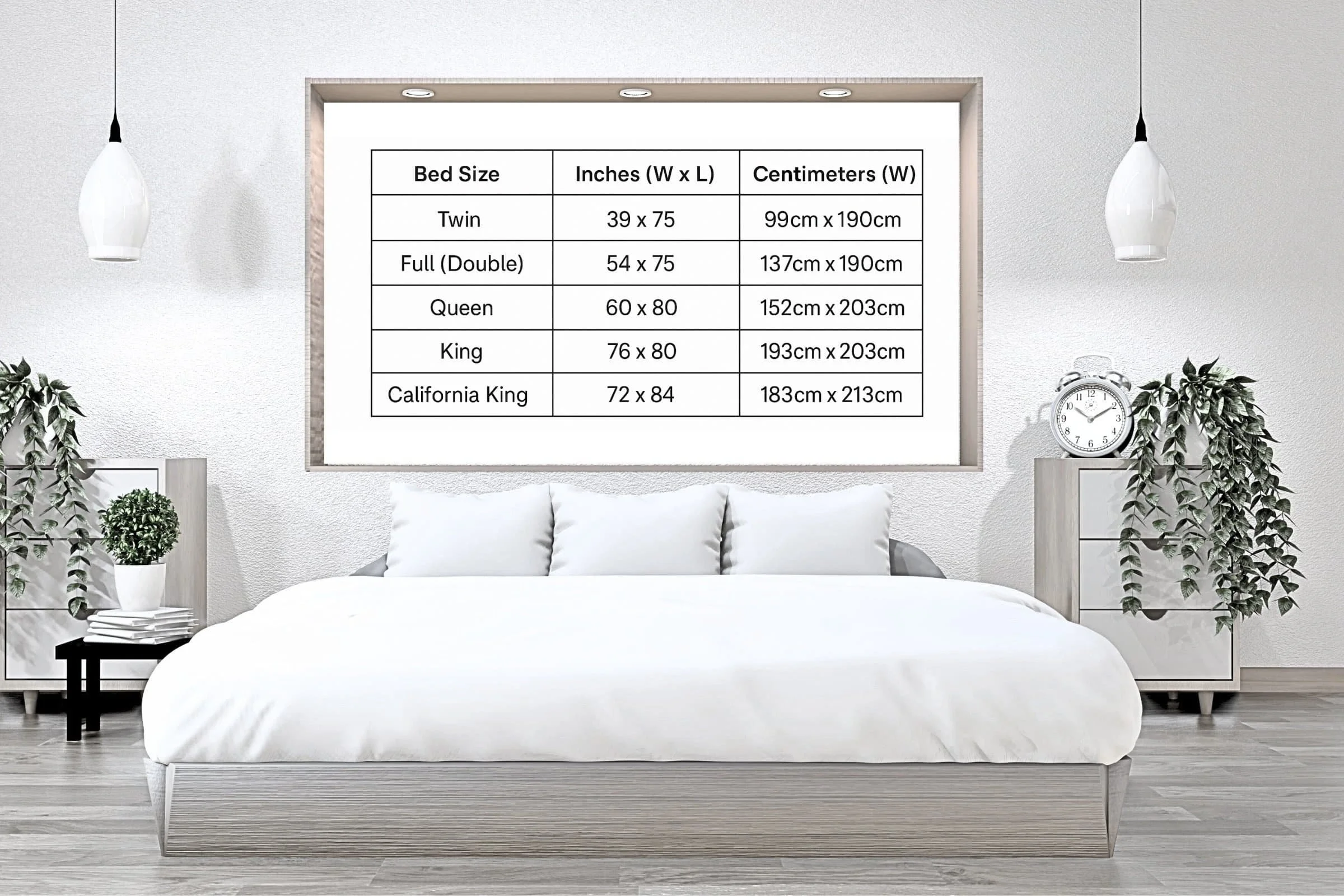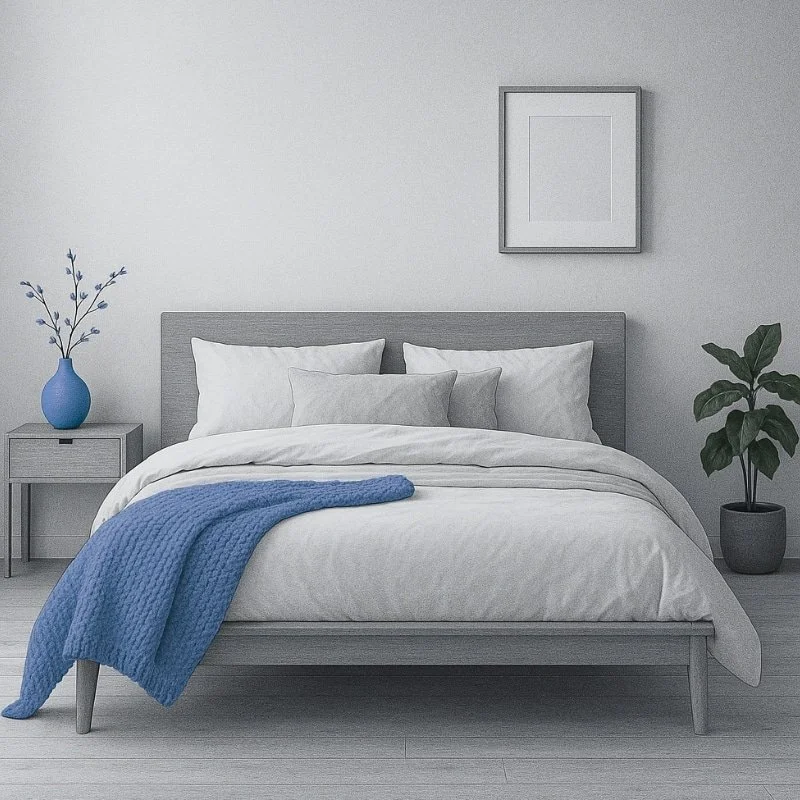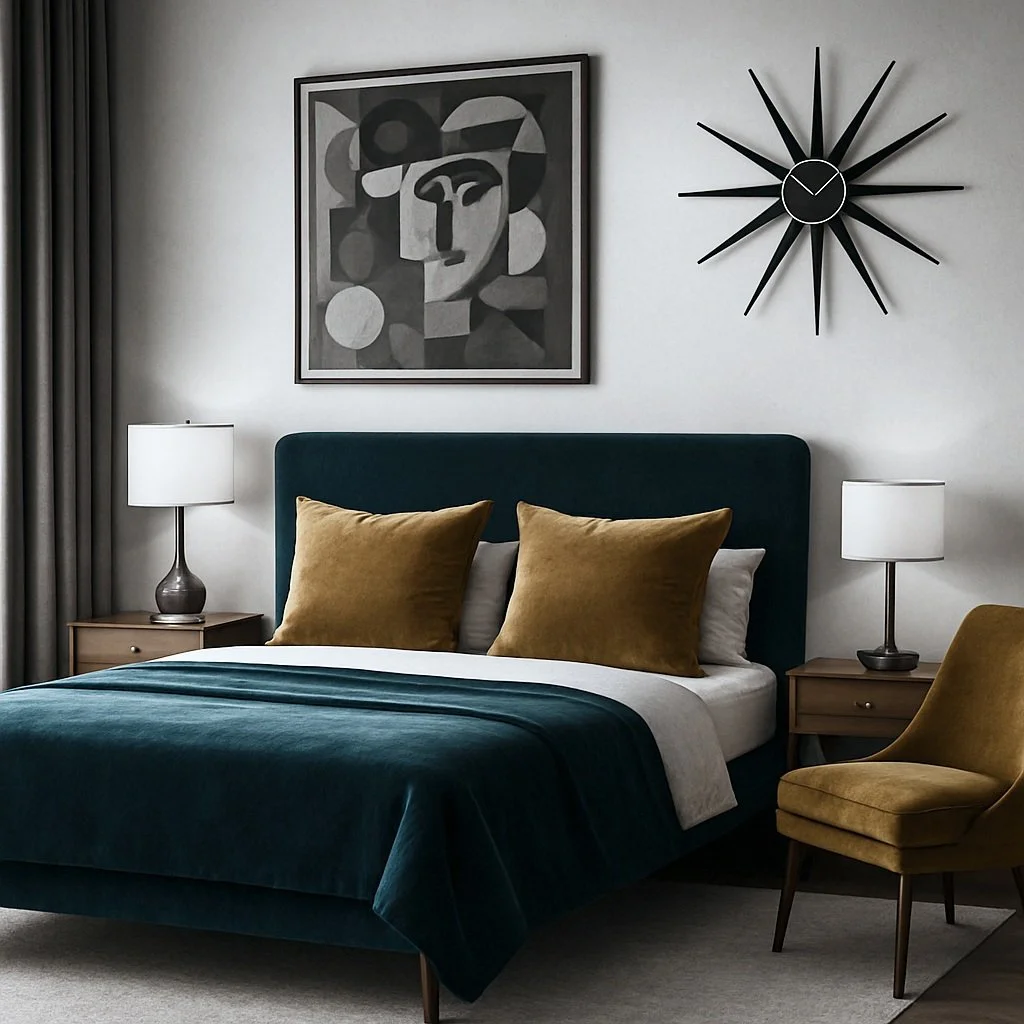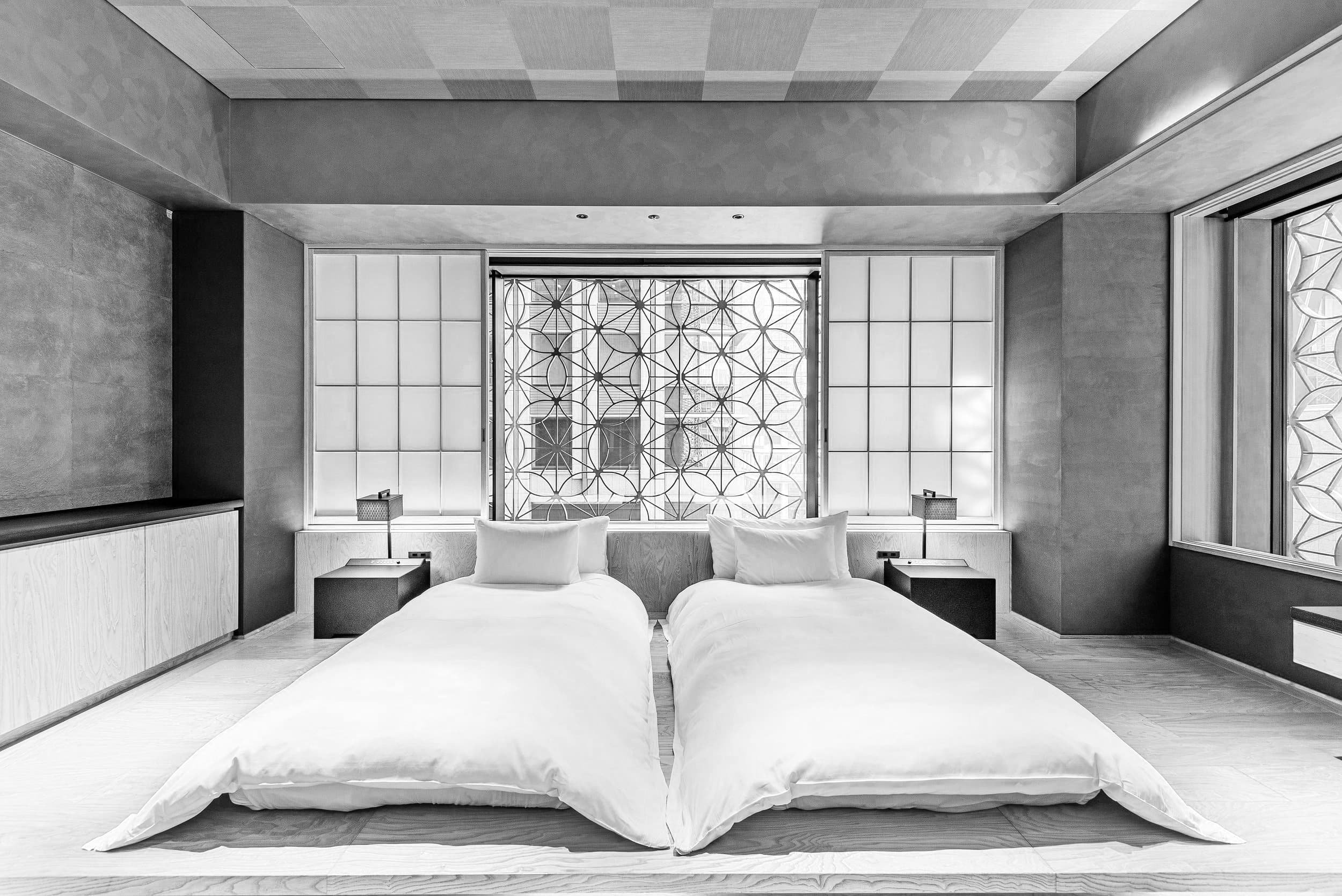Minimalist bedrooms prove that "when less is more, everything matters." Since there are so few, every bed element is carefully curated with a minimalist design ethos. The bed frame tends toward ultra-sleek forms: platform beds are a favorite for minimalists because their low, streamlined design eliminates the need for a bulky box spring and visually simplifies the room. Often, these beds have no headboard or a very pared-down one. If a headboard is present, it might be a flat panel upholstered in a solid color or a simple plank of wood – nothing ornate or fussy. The palette is generally restrained: shades of white, gray, or monochrome dominate, creating a calm, cohesive canvas. A "restrained palette and stripped-down simplicity" define the minimalist bedroom, so your bedding will likely echo that – perhaps all white cotton sheets with a light gray quilt or a tonal combination like beige on cream.
The attention to line, proportion, and quality makes a minimalist bed chic (rather than plain or boring). With fewer items in the room, the eye notices the headboard's shape, the fabric's exact color tone, and the texture of the duvet, much more. Therefore, invest in beautiful materials – for example, a high-quality linen duvet cover has a subtle rich texture that adds depth even in a single color, or a neatly tailored bedframe in natural oak showcases craftsmanship through joinery details. You can introduce visual interest by layering tone-on-tone textures. In an all-white bedding scheme, a chunky knit throw or a plush, shaggy accent pillow can keep the look from feeling too flat or sterile. In one designer's minimalist bedroom, a "shaggy, sheepskin throw" was draped over white bedding to prevent it from feeling too sparse, proving that even one tactfully chosen accessory can make a difference.
Storage is often built-in or hidden to keep the room clutter-free – you won't see trinkets or a pile of decorative pillows on a true minimalist's bed. In fact, minimalist styling often uses a significantly edited pillow selection: maybe just two sleeping pillows and one accent cushion or a pair of neatly placed bolsters. The overall goal is a peaceful, uncluttered environment where the bed invites relaxation and distraction. That doesn't mean a minimalist bed can't be luxurious in feel – on the contrary, by paring down, you can splurge on an ultra-comfortable mattress, buttery-soft sheets, or that one cashmere blanket since you're not spending on excessive ornamentation. Every piece on the bed should serve a purpose or bring joy. The result is a bed radiating calm and order, embodying the "less is more" mantra. When your bed achieves that balance, your bedroom becomes a stylish sanctuary of simplicity, perfect for recharging in a busy world.








